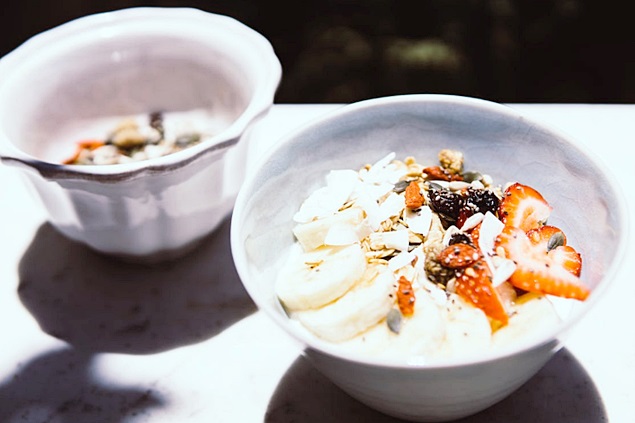
What did the Russians do to no longer depend on imports in terms of food? They innovated and adapted technologies. Additionally, they developed functional food formulas based on processed dairy raw materials.
For instance, technologies and tools developed for the production of functional shakes intended for use in the daily diet, like one of the meals, to eliminate the deficit of animal proteins, vegetable fats, essential fatty acids, and fat-soluble vitamins.
Studies conducted allowed the adjustment of technological parameters for the production of dairy products, at the request of mass consumers, to add functional properties. In production conditions, pilot batches of dairy products with the desired properties and biological products using secondary dairy raw materials were manufactured.
All these are included in the report titled "Development of an Integrated Technology for Milk Processing with the Production of Functional Dairy Products and Biotech Products for Food and Pharmaceutical Industry", produced by a research group consisting of Kseniya Starovojtova, Lyubov Tereshchuk, Marina Tarlyun, and Irina Dolgolyuk, from the Department of Food Engineering of Kamerovo University, Russia.
Increasing Nutritional Values
In the current socio-economic situation in the Russian Federation (and Romania, we might add, considering the economic issues generated by Covid-19), a crucial task is ensuring the country's food security. Measures aimed at increasing the nutritional value of food are considered effective.
Current nutrition issues include: imbalanced diets in terms of primary nutrients, insufficient essential nutrient content in the diet, namely, animal protein deficiency, vegetable fats, essential fatty acids, and fat-soluble vitamin deficiency.
The most effective method of preventing essential nutrient deficiency in the diets of different population groups is the direct enrichment of mass consumption products with vitamins, minerals, and essential fatty acids. Such products include milk and dairy products. The share of dairy products in the Russian consumption basket is, variably estimated at 20-30%. The high nutritional value of milk is undeniable, due to the presence of vitamins A, D, riboflavin, and β-carotene.
However, its vitamin composition is not constant and depends on many factors, including the season and the composition of dairy cow feed. Moreover, significant vitamin loss during the technological processing of milk, which includes separation, normalization, pasteurization, and drying.
Skimming milk also leads to the loss of fat-soluble vitamins A and D, tocopherols, and carotenoids. All of this indicates the rationale for further enriching milk and dairy products to achieve constant values of irreplaceable food substances in their composition, regardless of the season and the technological processing method of dairy raw materials.
Prevention Benefits
Milk is, of course, a valuable product, due to its complex multicomponent composition. However, in its whole form, it may not be suitable for the nutrition of certain adult and child groups. The most common types of milk intolerance are lactase deficiency and allergies to cow's milk proteins (goat, sheep, and others).
These forms of milk intolerance are commonly found in childhood but can also be present in adults. Implementing technologies for the production of lactose-free milk and milk drinks addresses this issue.
The task of obtaining low-allergy dairy products without losing nutritional value is achieved by modifying milk's protein components using enzymatic hydrolysis (proteolysis).
Using hydrolyzed proteins allows for the most complete assimilation of short-chain peptides in the gastrointestinal tract compared to native proteins and amino acids. Obtaining biologically active milk peptides with antihypertensive, antimicrobial, immunostimulatory, antifungal, and other properties is also of particular interest to the food and pharmaceutical industry.
Currently, hydrolysates are mainly requested as a component of infant milk formula for preventive and therapeutic purposes, but demand for them is primarily met with imported products.
However, one of the criteria for the country's food security is the self-sufficiency level in agricultural products. According to the Food Security Doctrine, the share of dairy products produced domestically should be at least 90%.
However, dairy product self-sufficiency remains, in fact, at approximately 80% due to the lack of domestic dairy products for dietary and therapeutic nutrition, as well as biological products obtained from dairy raw materials for agriculture, food industry, and pharmaceutical production needs.
Establishing Composition
Designing ingredient compositions and developing functional food product technology intended for diet optimization and prevention of nutrition-dependent diseases were carried out based on previous work justifying the theoretical line for creating functional properties of milk and dairy products.
Theoretical studies and part of the experimental studies on modeling the ingredient composition of developed functional products were conducted based on the food technology laboratories of the Vegetable Raw Materials Department of the Kemerovo State University, a federal budgetary educational institution of higher education.
Practical studies on testing milk processing technology and manufacturing functional ingredients and products were carried out based on a private farm located in the Kemerovo region. Its primary profile is the production of butter and cow cheese.
During the study, common and special research methods of raw materials and finished products were used. Organoleptic indicators, density, mass fraction of proteins, and their fractional composition, mass fraction of lipids and carbohydrates, thermal stability, and microbiological purity were determined in the raw milk supplied to the enterprise.
Various physical and chemical methods were used for analysis and assessment of compliance with biologically active substances obtained from dairy raw materials.
These included gas chromatography, gas-liquid chromatography, high-performance liquid chromatography, thin-layer chromatography, and electrochemical, spectroscopic, and potentiometric methods. For the quantitative analysis of organic substances, UV spectroscopy, IR spectroscopy, nuclear magnetic resonance spectroscopy, mass spectrometry, and other methods were used.
Ultimately, the goal was to develop instant milk processing technology for functional use, aimed at eliminating the deficiency of animal proteins, essential fatty acids, and fat-soluble vitamins.
Most of the ingredients making up the product were obtained during the processing of secondary dairy raw materials; biologically active substances obtained from processing plant materials were also used.
An Instant Granular Product
As a result of theoretical studies, a functional milkshake formula was developed, consisting of secondary dairy raw materials and ingredients obtained during its complete processing.
The instant granular product is a dry microemulsion obtained from dairy components (pre-condensed skim milk, sodium caseinate, whey protein concentrate, and lactose) and a fat phase, consisting of a composition of three vegetable oils with a balanced fatty acid content (sunflower, soy, and linseed oil), in a 50:30:20 ratio, and with additional enrichment with biologically active substances of plant origin.
This product is characterized by a high milk protein content. The specific choice of vegetable oils and their percentage in the fat phase is due to the goal of increasing the biological effectiveness of the finished product, as it is such accommodation that has a polyunsaturated fatty acid ratio at the 6-6: 3-3 level (4: 1), meeting the requirements for functional products. The sodium caseinate in the shake's composition fulfills both technological functions, improving the product's consistency, and helps increase nutritional value.
Whey proteins were also included in the product formula because they are considered the most complete, due to the presence of all essential amino acids in quantities and ratios that correspond to human physiological requirements.
Mixed vegetable phospholipids with lactose are also included in the formula. These ingredients also serve a dual function. Due to their surface activity and hydrophilic properties, the lecithin-lactose mixture, when interacting with the fat phase of the product, forms adsorption layers on the surface of powder particles, thus reducing the surface tension at the water-powder interface and preventing the agglomeration of fat globules, contributing to the instant nature of the product.
Additionally, vegetable phospholipids are indispensable nutrients, with an average daily requirement of 5 g/day. The product's formula also includes components with proven beneficial effects from numerous studies: an extract of carotenoid and tocopherol-rich sea buckthorn oil obtained through a three-stage percolation process.
Implementation of the Proposed Technology
Implementing the proposed technology will create competitive balanced dairy products and preventive products for specialized and rehabilitation nutrition, as well as biotechnological products with desired functional properties. Applying methods to modify dairy raw materials will provide the opportunity to intentionally change the structure and obtain products and preparations with new physical and chemical or structural and functional properties, contributing to increased yield and preservation of finished products, creating new functional products.





